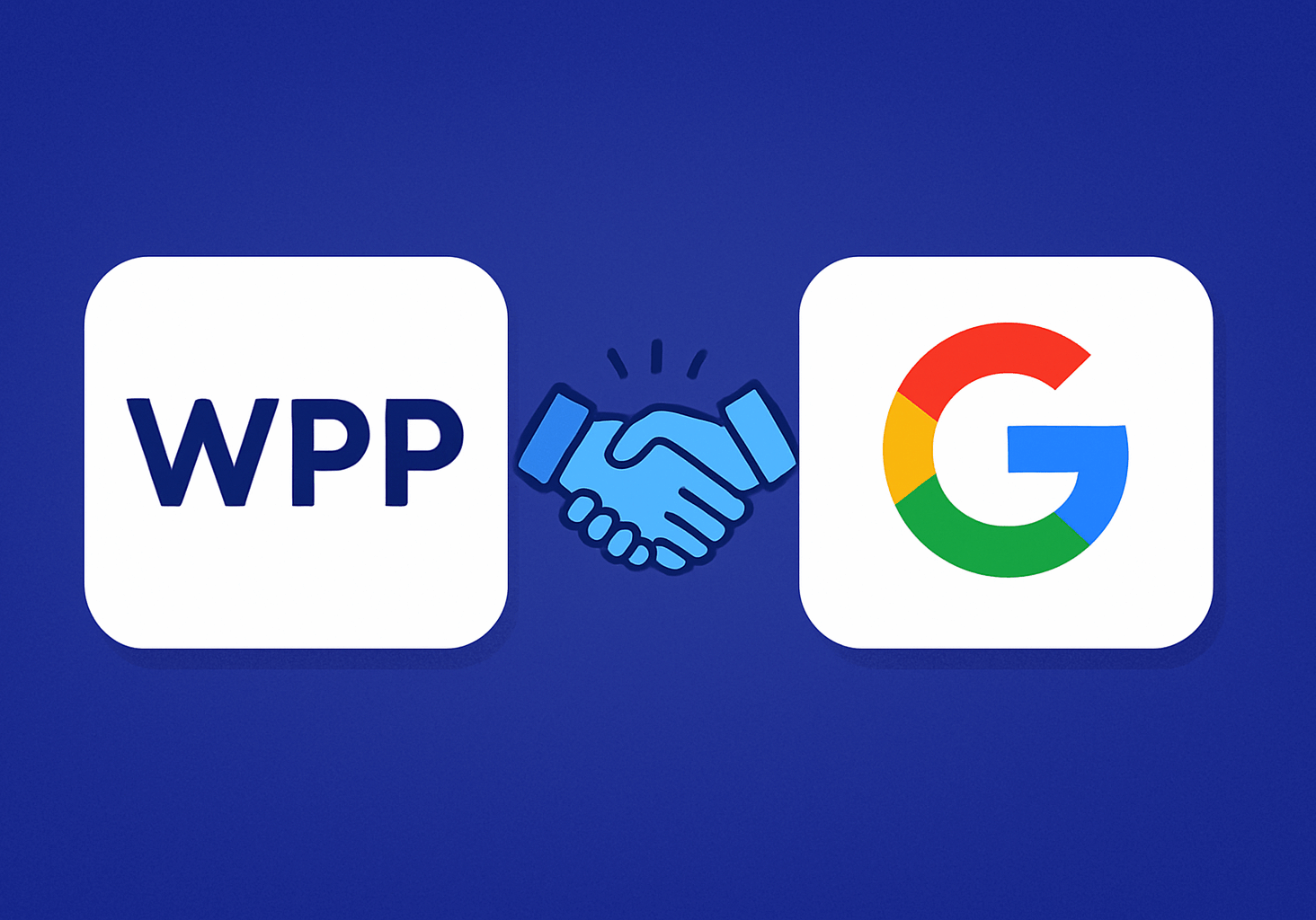
Around-the-Clock Global Marketing: 7 Strategies to Manage Teams Across Time Zones
You wake up to 63 Slack messages—half in languages you don’t speak, all marked “urgent.” Your designer’s waiting for feedback, you missed overnight. Your strategist just spotted a trend in one market that’s already old news in another. If this sounds familiar, you’re living the reality of global marketing, where campaigns don’t sleep, and neither do your notifications.
Leading a hybrid team across continents isn’t just about wrangling tasks. It involves managing cultural nuances, time zone conflicts, tool overload, and burnout that develops when boundaries are blurred. And yet, this chaotic setup holds the power to unlock ideas, perspectives, and campaigns that truly resonate on a global scale—if you know how to harness it.
So, how do you keep your team aligned when no one’s ever in the same room—or even on the same day?
7 proven ways to lead global marketing teams across time zones and tools
Let’s break down seven proven ways to lead global marketing teams across time zones, tools, and total chaos—and actually enjoy the ride.
1. Time zones aren’t the enemy. Poor planning is
First things first: stop blaming the time zones. Coordinating across more than 6+ time zones is difficult, YES…
Global marketing, however, is not about making everyone attend the same Zoom call at an insane hour!
The focus is on asynchronous excellence.
- Default to async: Record video briefs instead of live meetings. Use Loom, Notion, or internal wikis to document everything from campaign overviews to brand guidelines.
- Establish time-block sanctuaries: Designate 1-2 hours per week where everyone overlaps—use this for live collaboration or team bonding.
- Respect the “quiet zones”: Make it okay to delay a reply when it’s someone’s 3 AM. Productivity ≠ constant presence.
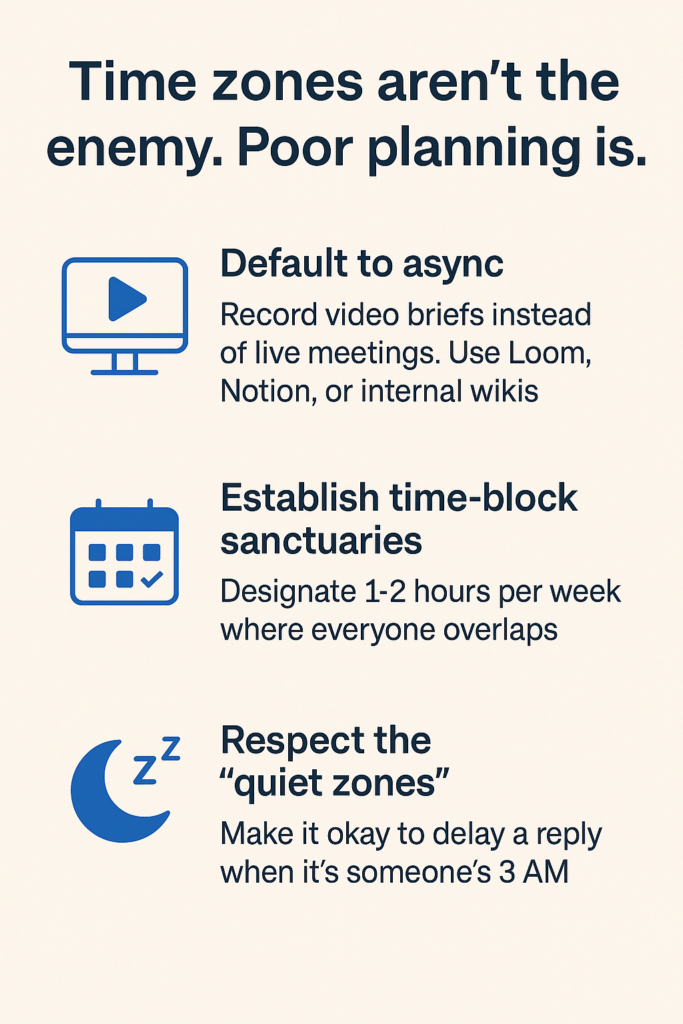
Great global marketing starts with a mindset shift: plan like a conductor, not like a micro-manager.
2. Tools don’t make the team. But they can break it
Between Zoom, Slack, Notion, Asana, Figma, Google Docs, Trello, and Monday.com—your team’s digital tool stack probably looks like a thrift shop for software.
The real challenge? Tool fatigue.
Subscribe to our bi-weekly newsletter
Get the latest trends, insights, and strategies delivered straight to your inbox.
It kills momentum faster than a broken Wi-Fi connection. Here’s how to keep it simple and synchronized:
- Select your “command center”: Find one hub that houses most of the material, updates, and planning. (Pro tip: Click Up or Notion works well for centralization.
- Set tool rituals: Monday is for updates on Asana, Tuesday is for creative reviews on Figma, and Wednesday is “no-meeting day.” Consistency builds clarity.
- Automate, don’t overcomplicate: Calendars, reminders, and briefs may synchronize with Zapier or Make. Your future self will be appreciative.
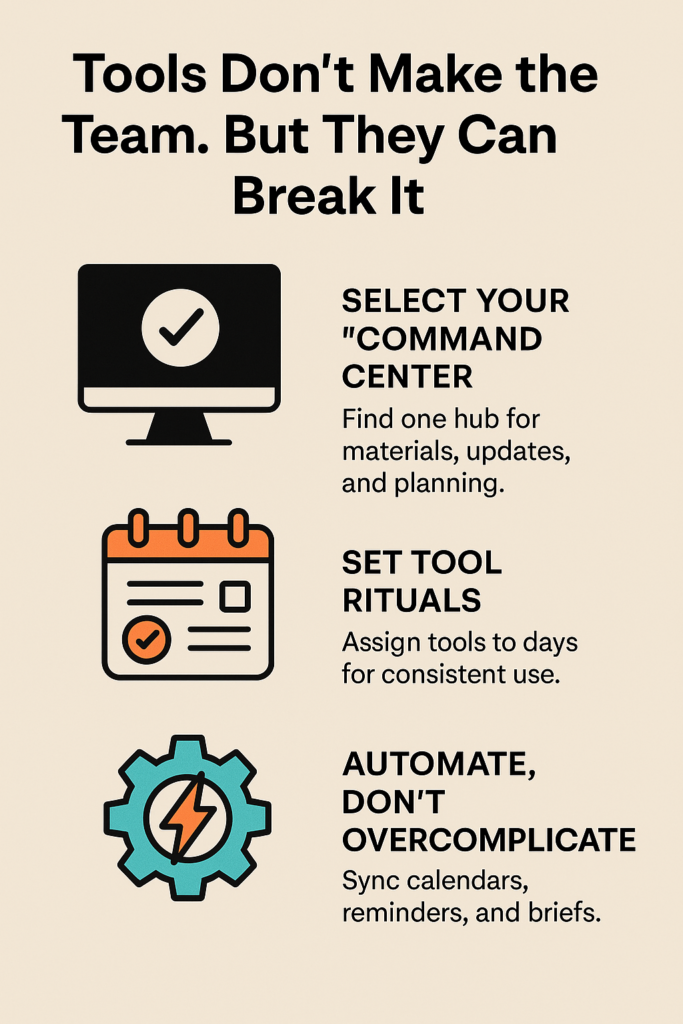
Remember: Tools should serve your workflow, not dictate it.
3. The culture quotient: Your brand isn’t the only thing going global
In global marketing, you’re not just navigating brand guidelines—you’re navigating human cultures. What’s witty in New York might flop in Tokyo. What’s bold in Berlin might be taboo in Dubai. So, how do you create campaigns that resonate globally without diluting the message?
- Think global, act local: Set a core campaign narrative, but empower local marketers to tailor messaging to their regions.
- Cross-cultural immersion: Schedule quarterly “culture swaps” where team members share insights from their regions—slang, trends, platforms, memes.
- Inclusive brainstorming: Bring diverse voices into campaign planning from the get-go, not just as a post-launch translation task.
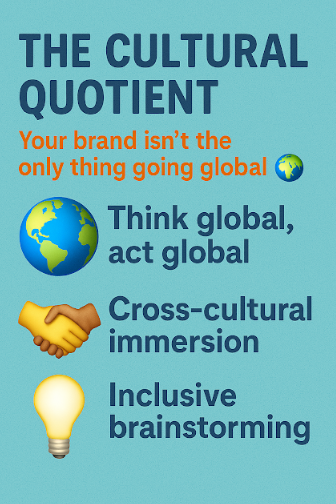
Cultural intelligence is no longer optional—it’s the heart of successful global marketing.
4. Trust is the new time tracker
You can’t watch everyone. You shouldn’t try to. In hybrid, global teams, trust becomes the currency of productivity. Micromanagement doesn’t scale across oceans. Here’s what high-trust global marketing teams do differently:
- Focus on outcomes, not online status. Set clear KPIs and let people choose how they get there.
- Celebrate Autonomy: Let team leads own their part of the campaign. Visibility should come from sharing wins, not checking in every hour.
- Create feedback loops: Monthly retrospectives and open debriefs build transparency without surveillance.
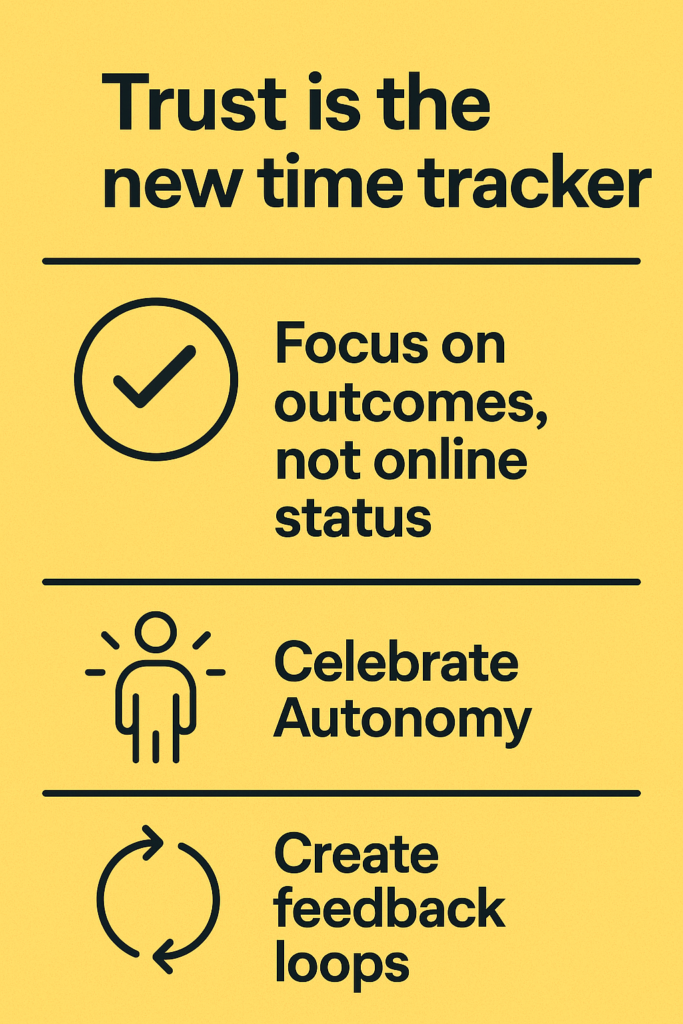
Spoiler alert: People do their best work when they feel seen, not watched.
5. Creativity doesn’t clock in—Build space for it
Here’s the biggest myth: remote + global = less creativity. Not true. In fact, when you lead a global marketing team, you have the ultimate creative asset: perspectives from all corners of the world. But to unlock that, you must engineer moments of creative collision.
- Run virtual creative jams: Think short, timed sessions with prompts—no slides, no briefs, just raw ideas. Tools like Miro or FigJam make this fun and fast.
- Design “slow ideas” spaces: Create Slack channels or Notion boards where team members can drop inspiration, ideas, or half-baked thoughts anytime.
- Celebrate weirdness: Not every idea needs to be polished. In fact, the most viral campaigns often start from quirky, left-of-center sparks.

Creativity isn’t linear, and it sure as hell isn’t time-zone dependent.
6. Communication is a campaign in itself
You think your external brand matters? Try leading a team without a solid internal communication plan. In global marketing, internal communication needs its own strategy. It’s not just about project updates—it’s about connections.
- Weekly digest: A short, fun roundup of wins, goals, shoutouts, and updates. Make it visual. GIFs encouraged.
- Voice matters: Use voice notes or video messages instead of long Slack paragraphs—they add warmth and clarity.
- Memes > Memos: A shared sense of humor can bridge the cultural gap faster than any onboarding doc.

Great communication isn’t just efficient. It’s emotional. It reminds your team they’re part of something bigger than their screen.
7. Embrace the chaos: That’s where the magic lives

Let’s be honest: leading global marketing teams can feel like herding caffeinated cats in a windstorm. But here’s the truth…The chaos is part of the creative process. Those moments when everything feels like it’s falling apart? That’s often the moment before your biggest breakthrough.
- That midnight brainstorm from your strategist in Seoul?
- That TikTok trend spotted by your intern in São Paulo?
- That campaign twist pitched by your designer in Warsaw?
It all adds up. This is the beauty of global marketing. It’s messy, vibrant, unpredictable—and that’s what makes it unforgettable.
Cut to the chase
You’re not just leading projects. You’re orchestrating a global symphony of voices, ideas, and cultures. The hybrid hustle isn’t easy, but it’s worth it. So, embrace the time zones. Streamline your tools. Listen to your people. Let the world influence your work. Because in this new marketing age, the teams that win aren’t the biggest or the busiest. They’re the most connected.

